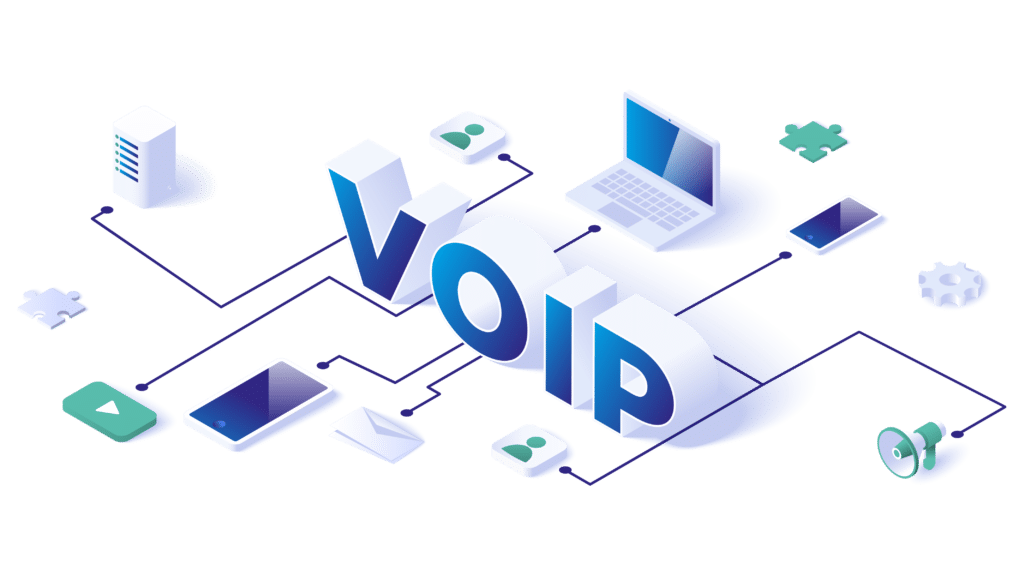Knowledge HubTM
What is VoIP?
- Date Posted:
- Read time: 3 minutes
- Written by: Exa Networks

The technology behind the traditional landline telephone has become antiquated and will reach the end of its life in 2025 when the public switched telephone network (PSTN) is due to be retired. Voice over Internet Protocol (VoIP) will predominantly replace this service and will therefore become the mainstream way of making telephone calls particularly in a commercial environment.
VoIP is simply a way to make calls over the internet, rather than using the conventional landline. It works by taking your analogue voice signals, turning it into digital data and transferring it over your internet connection.
VoIP is a cost effective alternative to a normal phone line; it has lower network infrastructure costs because it utilises your existing internet connection. You may also benefit from advanced features depending on your provider such as call dashboards, conference call functionality and application integrations.
VoIP Services
You may be familiar with WhatsApp, FaceTime and Facebook Messenger which are all types of VoIP application. These services are generally for one to one communication and require the participants to use the same platform. However the key difference between these apps and VoIP services is that they do not incorporate the public telephone network and therefore cannot be used as a like for like replacement for a landline telephone.
Commercial VOIP services will generally refer to two technologies, hosted private branch exchange (PBX) or session initiation protocol (SIP) trunks.
SIP trunks
SIP trunks are, in the simplest terms, virtual phone lines that run on your internet connection. You will still require a phone system (PBX) at your premises which must be compatible with SIP trunks in order to make this a viable option. Due to the fact SIP trunks rely on physical infrastructure at your premises, they still have some of the disadvantages associated with traditional phone systems.
A downside of SIP trunks is that because the system is based in your office it isn’t compatible with remote working. Homeworkers can’t take the handsets home to use as they wouldn’t connect to the service because it isn’t cloud-based.
They can be a cost effective solution if your existing PBX supports the use of SIP to transfer data, as you do not need to have a licence for every single handset at your premises. However, if your system isn’t compatible then it can be expensive as you will have the responsibility of setting up and maintaining a PBX box on your premises.
Hosted PBX
As the name suggests, a hosted PBX service replaces your on site phone system with a cloud based solution. The service is managed via a web browser-based portal and there is no hardware on your premises other than pre-configured handsets.
Hosted PBX services work on a licence subscription basis so you will usually pay a monthly fee for each handset you have on site. A key benefit of a hosted service is that if your power went off your service wouldn’t be affected because it’s in the cloud. It’s also far less disruptive and much easier to deploy, basically once you receive your new handsets you plug them into your internet connection and they’re good to go.
A major plus for a hosted PBX service is that it is completely flexible and can be used anywhere. So, if you have remote workers you can provide them with a handset and the phone will work in the same way as if it was still in the office.
Which one should I get?
As you can see there are pros and cons to both solutions. A good starting point is to review your current phone system, look at the way your team uses it and whether it is currently cost effective.
You also need to consider whether you require remote working capabilities and what your disaster recovery plans are as this will dictate which VoIP service is best for you.
Ultimately you need to find a solution that fits your requirements and also your budget, so you’ll need to speak to your ISP to discuss each service and decide whether it can be applied to your organisation.
Related Knowledge Hub™ Articles
- 21 July 2022
- 4 May 2023
- 4 min read





